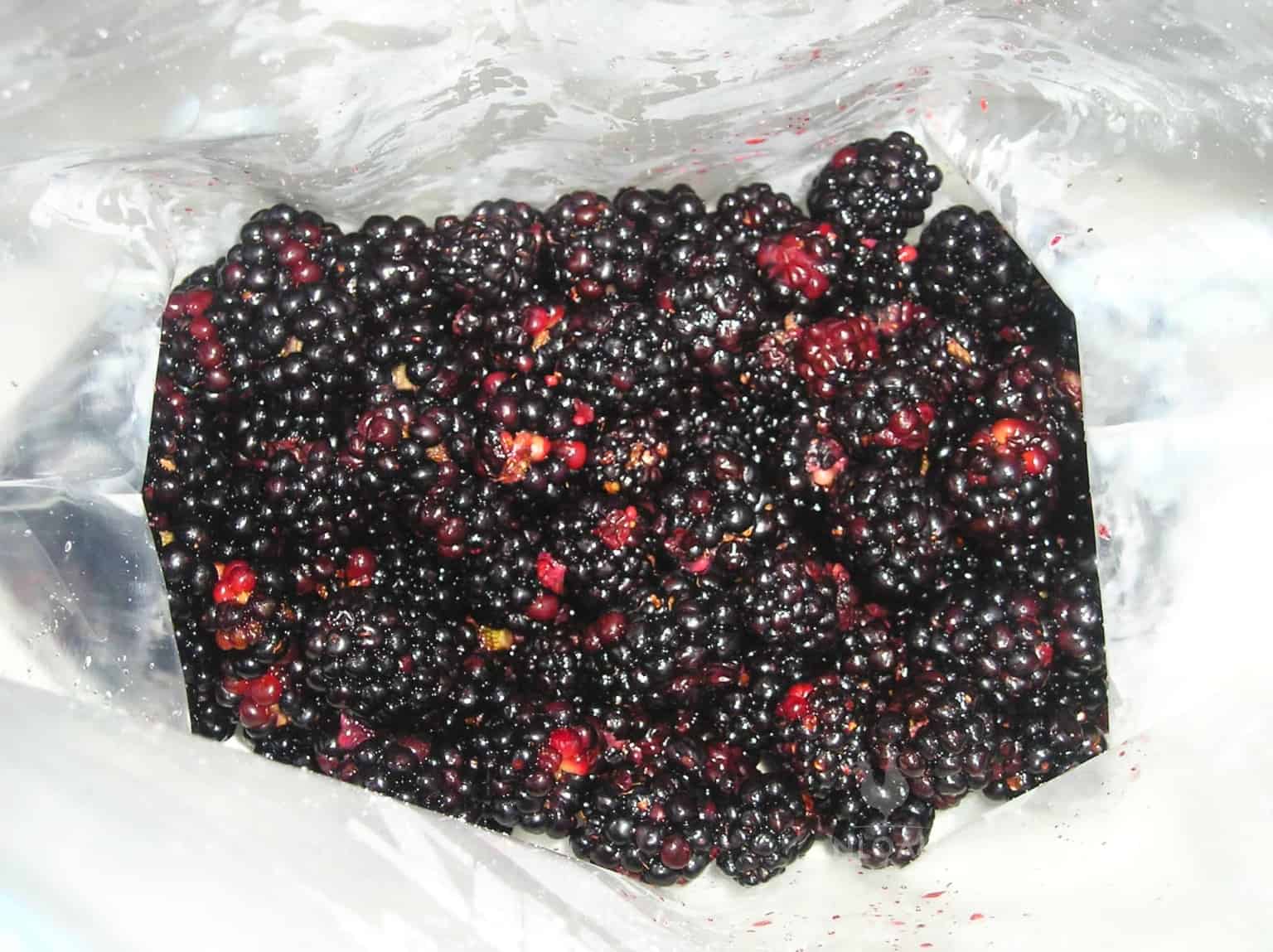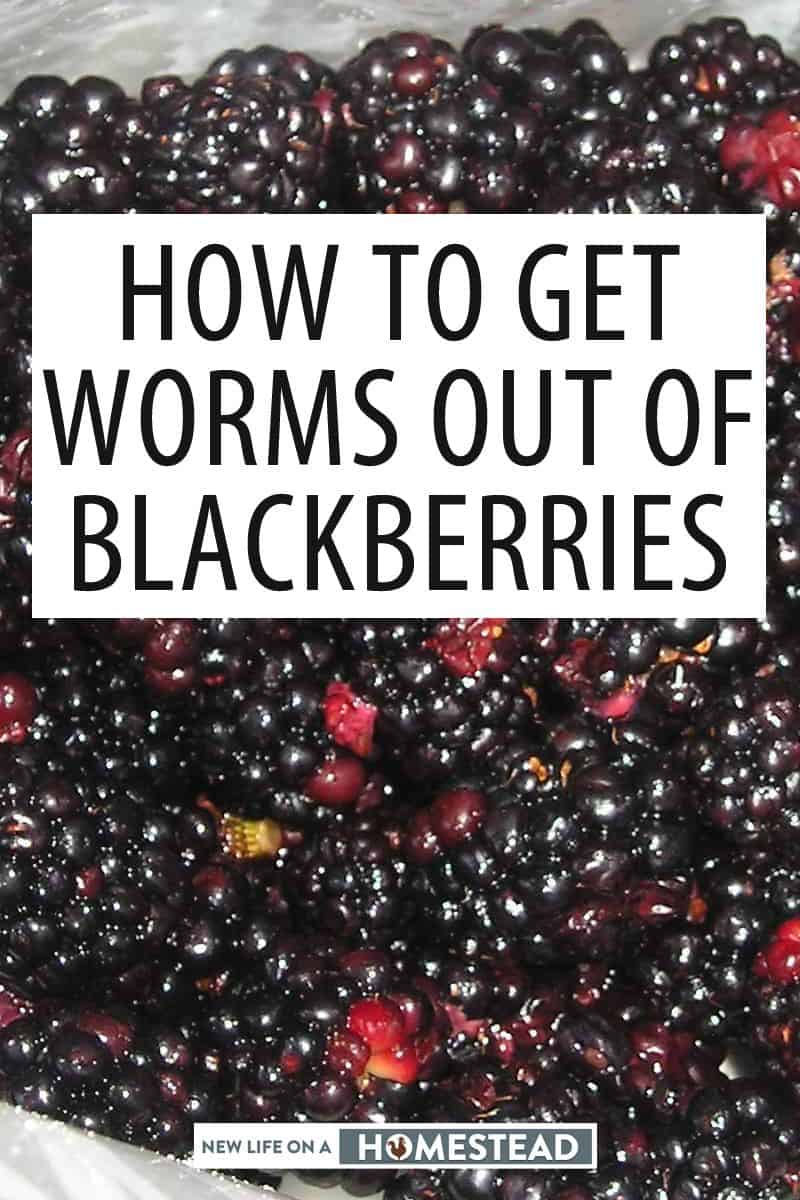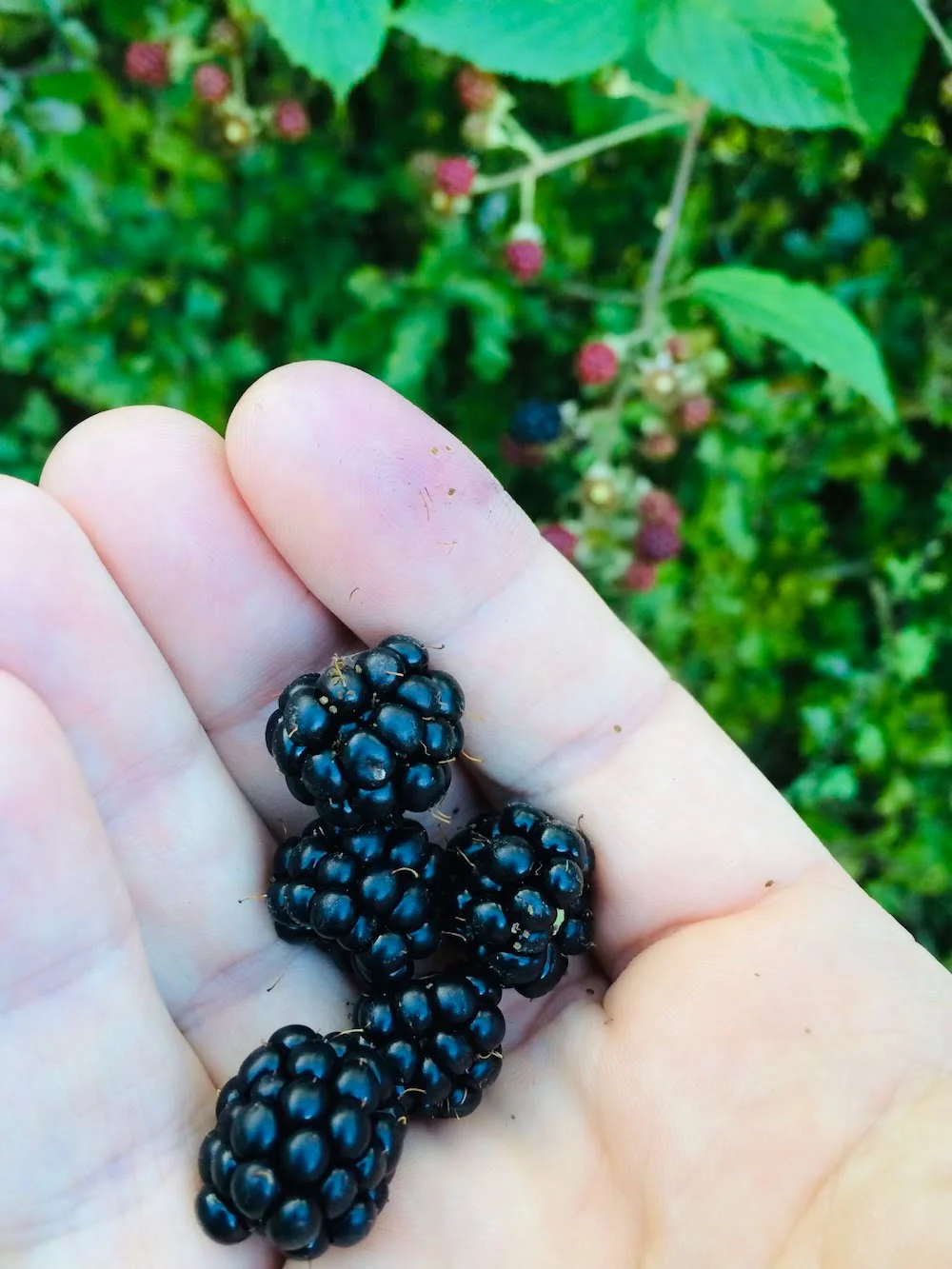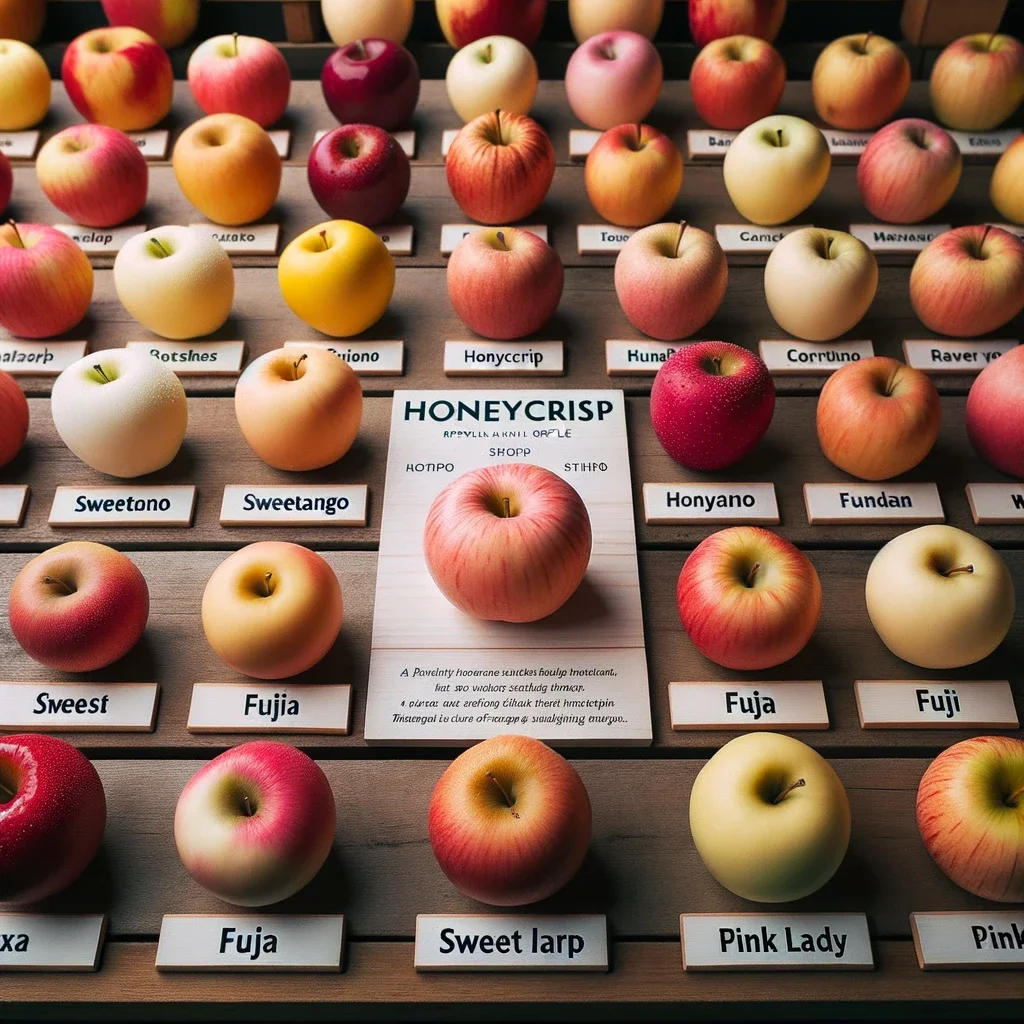In order to ensure a bug-free experience when enjoying the goodness of blackberries, it is essential to take necessary measures to remove any unwanted insects. This article will guide you through effective methods to get bugs out of blackberries, ensuring a delectable and safe consumption. By applying these simple yet practical techniques, you will be able to eradicate bugs and relish the natural sweetness of blackberries without any unsettling surprises. So, let us delve into the strategies that will safeguard your blackberries from unwelcome guests and enhance your overall culinary experience.

Identifying the Problem
Understanding Common Bugs in Blackberries
When it comes to growing blackberries, it is important to be aware of the common bugs that can infest these plants. One such pest is the blackberry psyllid. These small insects feed on the sap of blackberry leaves, causing stunted growth and curling of the leaves. Another common pest is the blackberry sawfly, which lay eggs on blackberry leaves and eventually feed on them. Additionally, blackberries can also be affected by pests like aphids, spider mites, redberry mites, and stink bugs. Understanding these common bugs is crucial in effectively preventing and managing infestations.
Recognizing Symptoms of Infestation
Recognizing the symptoms of bug infestations in blackberries can help you take prompt action to address the issue. Some common signs of infestation include stunted growth, wilting leaves, yellowing or browning of leaves, curled or distorted leaves, presence of webs or silk, and the appearance of tiny insects on the plant. It is important to regularly inspect your blackberry plants for these symptoms so that you can quickly identify and address any potential infestations.
Preventing Bug Infestations
Choosing Resistant Varieties
One effective way to prevent bug infestations in blackberries is to choose resistant varieties. Some blackberry cultivars have been bred to be less susceptible to certain pests, such as the thornless varieties, which are less attractive to insects. When selecting blackberry plants for your garden, consider choosing varieties known for their resistance to common pests. This can significantly reduce the chances of infestation in the first place.
Maintaining Good Garden Hygiene
Maintaining good garden hygiene is essential for preventing bug infestations. This includes removing fallen leaves and debris regularly, as these can serve as breeding grounds for pests. Pruning blackberry plants to provide good air circulation and removing any dead or diseased canes can also help deter bugs. Removing weeds around blackberry plants is crucial, as weeds can harbor pests and provide a pathway for them to infest your blackberries.
Using Protective Covers
Using protective covers, such as netting or row covers, can be an effective way to prevent bugs from accessing your blackberry plants. These covers create a physical barrier that keeps pests away from the plants, reducing the risk of infestation. When using protective covers, make sure they are securely fastened and properly maintained to ensure their effectiveness throughout the growing season.
Regularly Inspecting Plants
Regularly inspecting your blackberry plants is crucial in detecting any signs of bug infestations early on. By closely monitoring your plants, you can identify pests or symptoms of infestation before they become a major problem. Take the time to carefully inspect the leaves, stems, and berries, paying attention to any changes in color, texture, or the presence of insects. A thorough inspection on a regular basis can help you catch and address bug infestations in their early stages.

Natural Remedies for Bug Infestations
Attracting Beneficial Insects
One natural and eco-friendly approach to dealing with bug infestations in blackberries is by attracting beneficial insects to your garden. Beneficial insects, such as ladybugs, lacewings, and parasitic wasps, prey on pests like aphids and spider mites. Planting flowers like daisies, marigolds, and yarrow can attract these beneficial insects to your garden, creating a natural pest control system.
Hand Picking Bugs
For localized infestations, hand picking bugs can be an effective method of control. Wear gloves and carefully remove any visible pests from your blackberry plants, being sure to dispose of them properly. Hand picking not only helps to reduce the population of pests but also reduces the need for chemical intervention.
Applying Homemade Remedies
Homemade remedies can be an affordable and environmentally-friendly option for bug control in blackberries. For instance, a mixture of mild dish soap and water can be sprayed on plants to deter pests. Other homemade remedies include garlic or chili pepper sprays. These natural sprays can help repel pests and reduce infestations without negatively impacting the environment.
Using Horticultural Oils
Horticultural oils are another natural remedy for bug infestations in blackberries. These oils, such as neem oil or mineral oil, suffocate pests and disrupt their life cycles. When using horticultural oils, always follow the instructions on the product label and ensure proper application to avoid any adverse effects on the plants.
Encouraging Non-toxic Fungus
Certain non-toxic fungus, such as Beauveria bassiana, can help control pests like aphids and spider mites. These fungi infect and kill the pests, providing a natural control method. To encourage the growth of non-toxic fungus, avoid the use of broad-spectrum fungicides that can also harm beneficial insects.
Using Neem Oil
Neem oil, derived from the neem tree, is a natural insecticide that can effectively manage bug infestations in blackberries. Neem oil disrupts the pests’ hormonal balance, inhibiting their growth and reproduction. It can be applied topically to the plants using a spray bottle, but it is important to closely follow the instructions on the product label for proper usage and dosage.
Chemical Solutions for Bug Infestations
When to Consider Chemical Control
While natural remedies are preferable, there may be circumstances where chemical control becomes necessary. If a bug infestation is severe and natural remedies have proven ineffective, or if the infestation poses a significant threat to the health of your blackberry plants, it may be worth considering chemical solutions. However, it is important to use chemical insecticides as a last resort, following all safety precautions and guidelines provided by the manufacturers.
Choosing Appropriate Insecticides
When choosing insecticides for bug control in blackberries, it is essential to select ones that are labeled for use on blackberries and approved for the pests you are targeting. Different insects may require different types of insecticides, so carefully read the product labels and choose the appropriate insecticide for your specific pest problem. Depending on the severity of the infestation and the type of insecticide chosen, multiple applications may be necessary.
Applying Systemic Insecticides
Systemic insecticides are absorbed by the plants and circulate through their vascular system. This means that the insecticide becomes part of the plant’s tissues, making it toxic to insects when they feed on the plants. Systemic insecticides can be an effective way to control persistent bug infestations in blackberries. It is important to note that systemic insecticides should be used with caution, following all safety guidelines and recommendations provided by the manufacturers.

Preventing Specific Bug Infestations
Controlling Aphids
Aphids are small, pear-shaped insects that can damage blackberry plants by sucking sap from the leaves and stems. To control aphids, introduce natural predators such as ladybugs and lacewings to your garden. Additionally, regularly spraying the affected plants with a mixture of mild dish soap and water can help deter aphids. Pruning any heavily infested canes can also reduce the population of aphids.
Dealing with Spider Mites
Spider mites are tiny pests that can cause significant damage to blackberry plants by sucking the sap from the leaves, resulting in yellowing, wilting, and webs on the plants. To combat spider mites, regularly spray the plants with a strong blast of water to knock them off. Introducing predatory mites can also help control spider mite populations. If infestations persist, consider using natural remedies like neem oil or insecticidal soap.
Managing Redberry Mites
Redberry mites are microscopic pests that infest blackberry fruit, causing them to become deformed and brown. To manage redberry mites, it is crucial to practice good garden hygiene by removing and destroying any infected fruit. Pruning infected canes in late winter or early spring can also help prevent reinfestation.
Addressing Stink Bugs
Stink bugs can be a nuisance in blackberries as they feed on the fruit, causing damage and reducing the quality of the harvest. To address stink bugs, manually remove them from the plants and dispose of them in a sealed bag. Keeping the garden area clean and free of debris can also discourage stink bugs from nesting.
Preventing Common Diseases in Blackberries
Blackberry Cane Diseases
Blackberry cane diseases can significantly impact the health and productivity of your plants. Common cane diseases include cane blight, cane spot, and cane rust. To prevent these diseases, it is important to practice good garden hygiene by promptly removing and destroying any infected canes. Pruning blackberry plants in late winter or early spring can also help to remove potential sources of infection.
Fungal Diseases
Fungal diseases pose a significant threat to blackberry plants, affecting both foliage and fruit. Common fungal diseases in blackberries include anthracnose, powdery mildew, and botrytis fruit rot. To prevent fungal diseases, ensure proper air circulation by pruning plants to create a more open structure. Avoid overhead watering, as excessive moisture can promote fungal growth. Applying fungicides labeled for use on blackberries can also be an effective preventive measure, especially in areas prone to high humidity or frequent rainfall.
Viral Diseases
Blackberries can be susceptible to various viral diseases, including Raspberry Bushy Dwarf Virus (RBDV) and Tomato Ringspot Virus (ToRSV). These diseases can cause stunted growth, leaf discoloration, and reduced fruit yield. To prevent viral diseases, it is essential to use virus-free planting material and practice strict sanitation measures when handling plants. Removing and destroying infected plants is vital to prevent the spread of viruses to healthy plants.

Cultural Practices to Keep Bugs Away
Proper Pruning Techniques
Proper pruning techniques play a crucial role in preventing bug infestations. Prune blackberry plants during the dormant season to remove diseased or damaged canes. Additionally, thinning out the plants to create better airflow can help deter pests. Avoid pruning during wet weather to minimize the risk of fungal infections.
Mulching for Disease Prevention
Mulching around blackberry plants can provide several benefits, including disease prevention. Apply organic mulch around the base of the plants to suppress weeds, retain moisture, and regulate soil temperature. This helps create optimal growing conditions and reduces stress on the plants, making them less susceptible to bug infestations and diseases.
Watering Techniques
Proper watering techniques are essential for maintaining healthy blackberry plants and minimizing the risk of pests. Water the plants deeply and infrequently to encourage deep rooting and discourage the development of shallow, weak roots. Avoid overwatering, as excessive moisture can create a favorable environment for pests and fungal diseases. Water at the base of the plants to keep the foliage dry, reducing the risk of foliar diseases.
Fertilizing Strategies
Proper fertilization is key to promoting healthy growth and increasing the natural defenses of blackberry plants against pests. Conduct a soil test to determine the specific nutrient needs of your plants and apply fertilizers accordingly. Avoid overfertilization, as excessive nitrogen can promote lush, tender growth that is more susceptible to pests. Instead, provide a balanced fertilizer that meets the nutritional requirements of blackberry plants without encouraging excessive vegetative growth.
Garden Maintenance Tips
Cleaning Garden Tools
Properly cleaning and maintaining garden tools is important for reducing the risk of spreading pests and diseases. After each use, remove any vegetation or soil from the tools and sanitize them with a solution of bleach and water or a commercial disinfectant. This helps prevent the transfer of pests and diseases from one area of the garden to another.
Adjusting pH Levels
Maintaining the correct pH levels in the soil is essential for healthy blackberry plants and reducing the risk of disease and pest infestations. Blackberries prefer slightly acidic soil with a pH range of 5.5 to 6.5. Conduct a soil test to determine the pH of your soil and adjust it accordingly using amendments like sulfur to lower pH or lime to raise pH.
Choosing the Right Planting Location
Choosing the right planting location for blackberries can significantly impact their health and resistance to pests. Select a site with well-drained soil and adequate sunlight. Avoid planting blackberries in low-lying areas prone to waterlogging or areas with heavy clay soils. Adequate sunlight ensures proper plant growth and reduces the risk of fungal diseases, while well-drained soil prevents excess moisture that can attract pests.

Creating a Bug-Free Garden Space
Companion Planting
Companion planting can be an effective strategy for creating a bug-free garden space. Certain plants, such as marigolds, basil, and catnip, have natural properties that repel pests. Interplanting these repellent plants among your blackberries can deter pests and reduce the risk of infestation. Additionally, planting flowers with edible nectar can attract beneficial insects that prey on pests, creating a more balanced ecosystem.
Providing Adequate Sunlight
Providing adequate sunlight is essential for the growth and health of blackberry plants, as well as deterring pests. Make sure your blackberry plants receive at least 6-8 hours of direct sunlight each day. Sufficient sunlight not only promotes vigorous growth but also creates unfavorable conditions for pests like aphids and spider mites, which thrive in shady and humid environments.
Removing Nearby Weed Sources
Weeds can serve as potential hosts for pests and diseases that can easily spread to your blackberry plants. Regularly remove weeds from the garden and create a weed-free zone around your blackberries. This reduces the chances of pests and diseases finding their way to your plants and helps maintain a cleaner garden environment.
Consulting Professionals
Seeking Help from Local Agricultural Extension Offices
If you are facing persistent bug infestations or struggling with disease management in your blackberry plants, it may be beneficial to seek help from your local agricultural extension office. These offices have experts who can provide valuable advice and recommendations specific to your region. They can guide you on pest identification, integrated pest management strategies, and sustainable gardening practices to effectively address and prevent bug infestations.
Hiring Pest Control Services
In some cases, bug infestations in blackberries may require the intervention of professional pest control services. Pest control professionals have specialized knowledge and expertise in identifying and treating pest problems. They can provide targeted solutions and help develop long-term pest management plans to ensure the health and productivity of your blackberry plants.
Joining Gardening Communities
Being part of gardening communities and forums can provide valuable insights and practical advice on bug control in blackberries. Engaging with experienced gardeners and experts through online communities or local gardening clubs can help you learn from their experiences, gain new perspectives, and stay updated on the latest techniques and strategies for bug management. Sharing your own experiences can also contribute to the collective knowledge and help others facing similar challenges.
In conclusion, preventing and managing bug infestations in blackberries requires a comprehensive approach that includes understanding common pests and diseases, implementing preventive measures, employing natural remedies, considering chemical solutions when necessary, and practicing proper cultural and maintenance practices. By following these guidelines and staying proactive in your efforts, you can enjoy healthy and thriving blackberry plants free from bug infestations and diseases.



